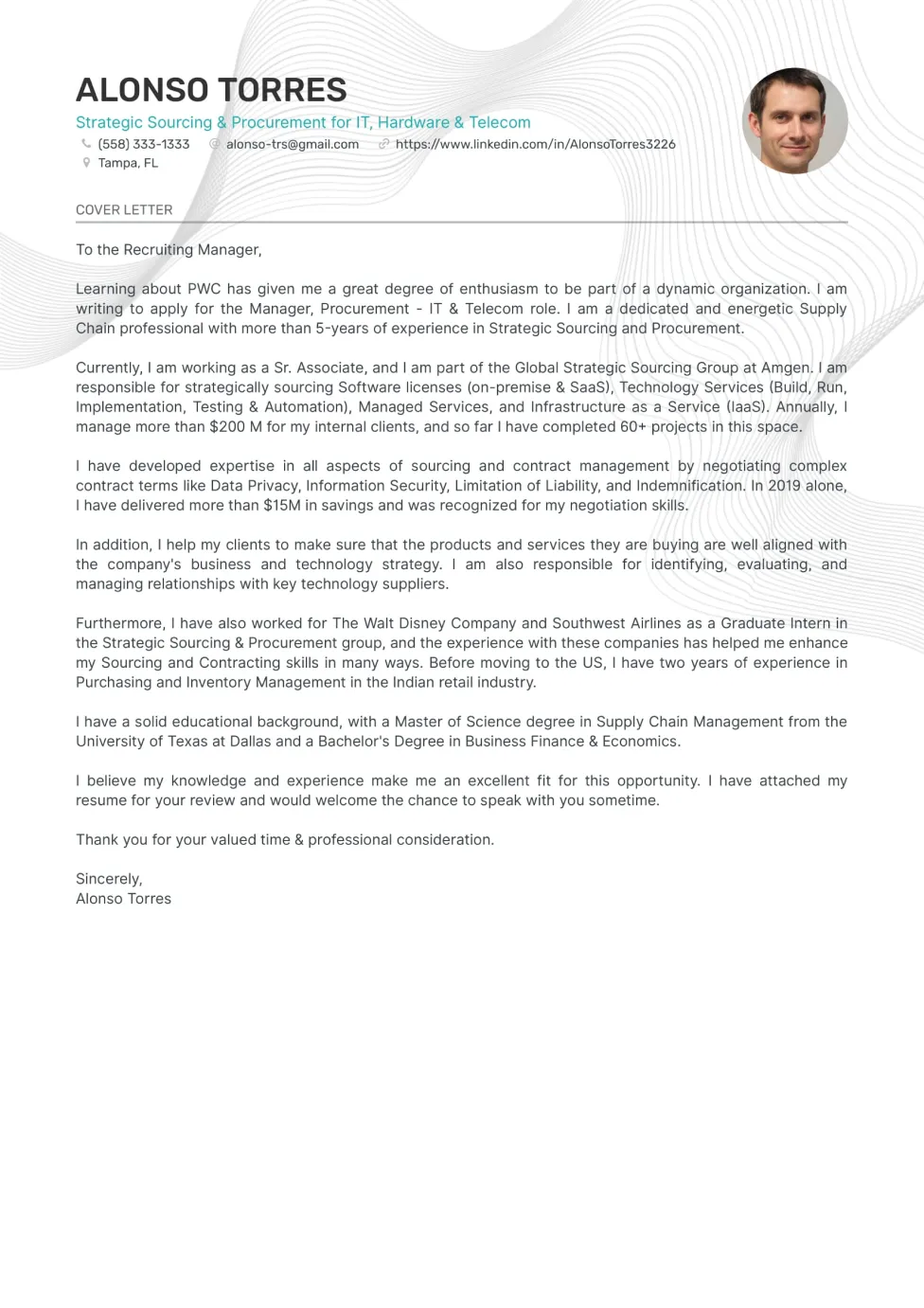The Importance of an IT Resume Cover Letter
In the competitive world of Information Technology, a well-crafted IT resume is essential. However, it’s often the accompanying cover letter that truly sets you apart. Many IT professionals underestimate the power of a compelling cover letter, viewing it as a mere formality. This is a significant mistake. A cover letter is your first impression, a crucial opportunity to showcase your personality, skills, and enthusiasm, making it a vital component of any IT job application. A well-written cover letter demonstrates your communication skills and attention to detail, qualities highly valued by IT hiring managers.
Why a Cover Letter is Crucial
A cover letter provides context and personality that a resume alone cannot convey. It allows you to explain any gaps in your employment history, elaborate on your technical expertise, and express your genuine interest in the specific role and company. It gives you a platform to connect your skills and experiences with the job requirements, showing the hiring manager exactly why you are the ideal candidate. A strong cover letter is often the deciding factor when comparing similarly qualified candidates.
Cover Letter vs Resume
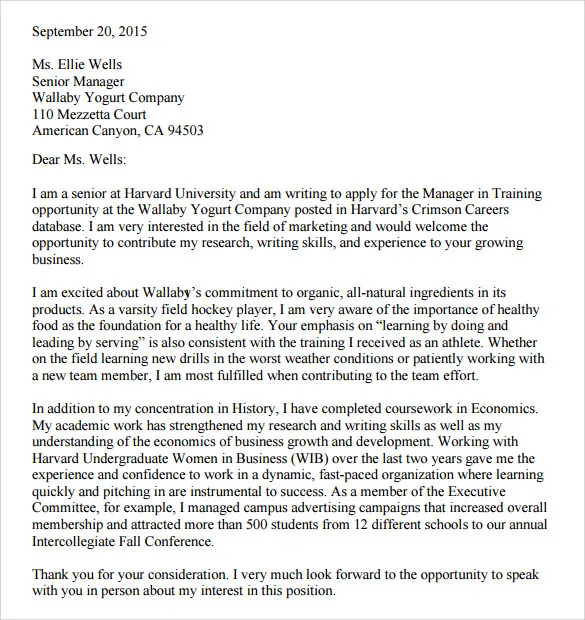
The resume is a factual document, a snapshot of your skills and experience. The cover letter, on the other hand, is where you tell your story. It’s where you make a personal connection with the hiring manager, providing a narrative that complements your resume. The resume lists the ‘what’ and ‘how’ of your past roles, while the cover letter explains the ‘why’ – why you chose those roles, why you excelled, and why you are a good fit for the new opportunity. Think of them as a team, working together to convince the hiring manager to invite you for an interview.
Key Components of a Compelling IT Resume Cover Letter
Contact Information and Salutation
Begin with your contact information – name, phone number, email address, and LinkedIn profile URL (if applicable). Then, address the hiring manager by name. If you can’t find the hiring manager’s name, research the company website or LinkedIn. A personalized salutation demonstrates that you’ve done your homework and are genuinely interested in the role. Avoid generic greetings like ‘To Whom It May Concern’ if possible.
Highlighting Relevant Skills and Experience

Carefully review the job description and identify the key skills and experience the employer is seeking. Then, in your cover letter, directly address those requirements. Provide specific examples of how your skills and experience align with the job responsibilities. Use keywords from the job description naturally throughout your cover letter to demonstrate your understanding of the role and your qualifications. This is where you showcase your technical prowess.
Quantifying Achievements
Whenever possible, quantify your accomplishments. Instead of saying, ‘Improved network performance,’ say, ‘Improved network performance by 25%, resulting in faster data transfer speeds and reduced downtime.’ Numbers and metrics make your accomplishments more impactful and demonstrate the tangible results you’ve achieved in previous roles. Use data to showcase the value you brought to previous employers.
Tailoring the Cover Letter to the Job
Avoid sending generic cover letters. Each cover letter should be tailored to the specific job and company. Research the company’s mission, values, and culture. Demonstrate your understanding of their needs and how you can contribute to their success. Show that you’ve taken the time to learn about the organization and are genuinely interested in joining their team. This level of personalization shows commitment.
Demonstrating Enthusiasm and Interest
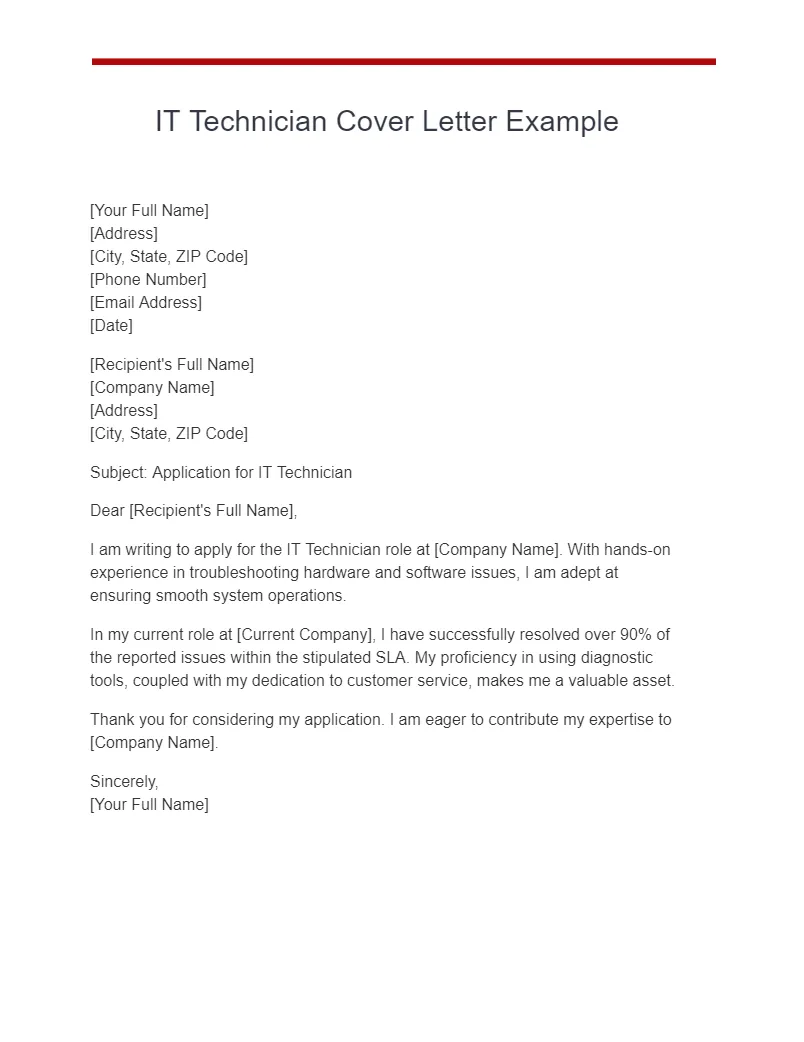
Express your enthusiasm for the role and the company. Explain why you’re excited about the opportunity and what aspects of the job appeal to you. Show that you’ve done your research and are passionate about the field of IT. Your passion is contagious, making you more memorable and attractive to the hiring manager. Avoid sounding overly formal and let your personality shine through.
Call to Action and Closing
End your cover letter with a clear call to action. State your availability for an interview and reiterate your interest in the position. Thank the hiring manager for their time and consideration. Use a professional closing, such as ‘Sincerely’ or ‘Best regards,’ followed by your name. Ensure your closing reflects the tone of your letter.
Secrets to a Standout IT Resume Cover Letter
Using Keywords Effectively
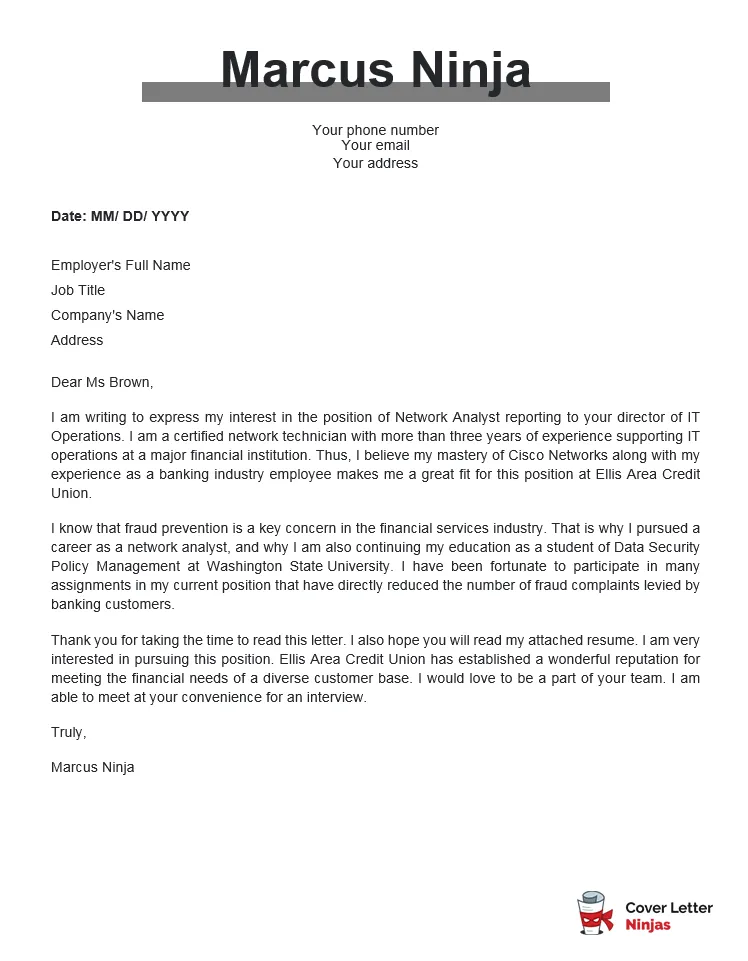
Incorporate keywords from the job description naturally throughout your cover letter. This helps you pass Applicant Tracking Systems (ATS) and demonstrates that you meet the job requirements. However, avoid keyword stuffing. The keywords should flow seamlessly within your writing, not feel forced or artificial. Focus on relevance, using the right keywords in the right context.
Showcasing Your Personality
Let your personality shine through. While professionalism is essential, don’t be afraid to inject your personality into your cover letter. Use a conversational tone and showcase your passion for IT. This helps the hiring manager get a sense of who you are beyond your skills and experience. Be authentic and let your genuine enthusiasm for the role come across.
Proofreading and Editing
Proofread your cover letter carefully for any typos, grammatical errors, or formatting inconsistencies. Have a friend or colleague review it as well. Errors can make you appear careless and unprofessional, potentially costing you the opportunity. Pay attention to detail and present a polished and professional cover letter.
Common Mistakes to Avoid
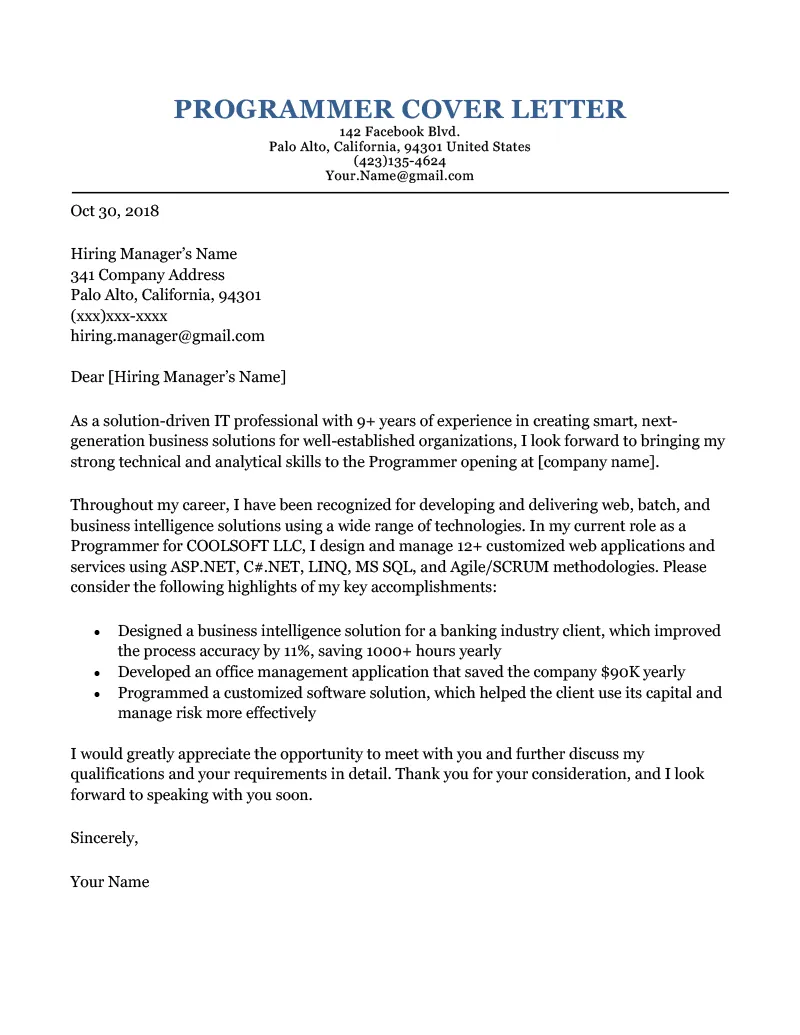
Generic Cover Letters
Avoid sending the same cover letter for every job application. Tailor your cover letter to each specific role and company. Generic cover letters show a lack of effort and may lead the hiring manager to believe you’re not genuinely interested in the position. Always customize your cover letter to show you have done the research and are enthusiastic.
Typos and Grammatical Errors
Typos and grammatical errors are a major turn-off. They can damage your credibility and make you appear unprofessional. Proofread your cover letter thoroughly, and ask someone else to review it for you. Pay close attention to detail, as errors can undermine the quality of your application.
Ignoring the Job Description
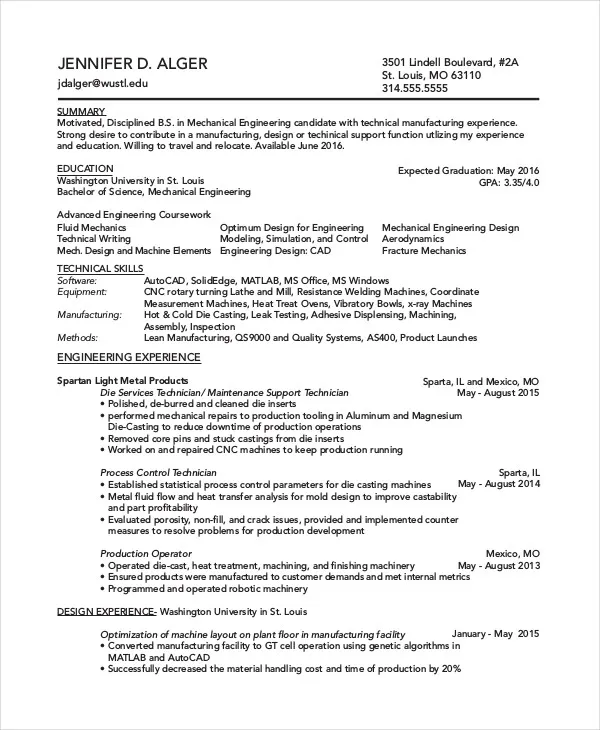
Failing to address the requirements outlined in the job description is a significant mistake. Your cover letter should directly connect your skills and experience to the specific needs of the role. If you ignore the job description, you’ll miss the chance to prove that you are a good fit. Show the hiring manager that you understand the role and how you can contribute.
Examples of Effective IT Resume Cover Letters
Example Cover Letter 1
This section provides a sample cover letter structure for an IT support role, highlighting the candidate’s ability to troubleshoot technical issues and provide excellent customer service. It emphasizes relevant keywords, such as ’troubleshooting,’ ‘customer service,’ ’technical support,’ and details experience with specific software and hardware. The example also showcases how to quantify achievements, for example ‘reduced help desk ticket resolution time by 15%’. This includes a personalized opening, a skills-focused body, and a professional closing. The goal is to demonstrate how to match your skills to the jobs description.
Example Cover Letter 2
This example focuses on a cover letter for a software developer position, highlighting the candidate’s coding skills, project experience, and understanding of software development methodologies. It emphasizes relevant keywords, such as ‘Java,’ ‘Python,’ ‘Agile,’ and ‘software development,’ demonstrating coding proficiency and experience with specific technologies and project types. The example uses the STAR method (Situation, Task, Action, Result) to showcase achievements. It includes a strong opening that grabs attention, a body that clearly demonstrates skills, and a closing that indicates excitement to contribute.
Example Cover Letter 3
This example showcases a cover letter for a cybersecurity analyst role, highlighting the candidate’s knowledge of cybersecurity principles, experience with security tools, and ability to identify and mitigate threats. It emphasizes relevant keywords, such as ‘cybersecurity,’ ’threat detection,’ ‘risk assessment,’ and experience with specific security software. The example showcases the ability to assess potential risks and implement mitigation strategies. This emphasizes skills and a passion for security, a personalized approach is always recommended.
Final Thoughts on Your IT Resume Cover Letter
A well-crafted IT resume cover letter is an essential tool in your job search. By following these secrets and avoiding common mistakes, you can significantly increase your chances of landing an interview. Take the time to tailor each cover letter, proofread carefully, and let your personality shine through. Your cover letter is your chance to make a strong first impression and demonstrate why you’re the perfect fit for the IT role. Invest the effort, and you’ll reap the rewards of a successful job search.
